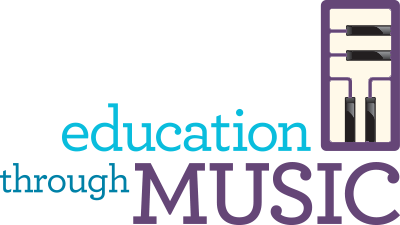Learning More Than Repertoire
Ashley D’Amico has been teaching with ETM for two years, beginning her work with us when school–and music classes–were fully remote. This year, she’s teaching kindergarten through 5th grade in person at PS 46 in the Bronx.
Combating Fatigue
One of Ashley’s key goals is making sure her students are engaged during class. That means that Ashley is acutely aware of what else might be going on in their lives. For many students, December is a festive month, and Ashley has chosen to harness the joyful energy of the season with them, through music.
In an effort to be responsive and respectful, Ashley is eschewing holiday music and focusing on winter music. Because her students celebrate in a lot of different ways this time of year (and some not at all), Ashley is making sure the music she teaches in class is inclusive by focusing on winter music from around the world.
Also, she wants to engage the whole school community by producing a winter concert, giving every student the opportunity to perform, and the opportunity to attend as an audience member.
But learning and retaining concert music, or what we call concert repertoire, can be challenging for young kids. It can mean singing the same song again, and again, and again. One of the strategies she’s using to combat “concert fatigue” is to make every repetition of the song focus on a different aspect of the music or interact with the music in a new way.
360 Degrees to a Song
This starts when Ash first introduces a song. For example, one of the songs her students will be singing at their concert this January is “Sing a Song of Winter,” by Teresa Jennings. To introduce the song, she first played it for them, asking the students to pat their laps to the beat. Getting kids to connect physically with the song keeps interest high and also prepares students to dive deeper into the music.
Next, she invited students to play along with Orff instruments, some of which look like xylophones, and are fundamental to ETM’s classrooms. These instruments can be adjusted so that students literally can’t hit a wrong note. Thus, when playing an Orff instrument, students are able to reproduce musical patterns, improvise, and get comfortable with music without losing confidence over a wrong note. What’s more, it introduces students to the collaborative nature of music making.
While Ashley’s students rotated time on the Orff instruments, other students were given scarves and invited to create original choreography. Giving kids a chance to dance provides another medium for students to connect with the music and deepen their understanding of music theory.
Ashley says, “rehearsing concert repertoire can be tiring for both the students and myself, but exploring the Orff motto “Sing, Say, Dance, Play” really helps us spice things up with a variety of ways to have fun with our music.”
Learning, not Drilling
Eventually, Ashley will show them what the notes look like on the page. When she does that, students will already have a frame of reference for the music. She’ll have them identify what they can already recognize on the written page, and then work with them to reveal what they have yet to learn. Discovery learning is another way ETM teachers help students engage with learning; by skipping the lecture and making learning collaborative, more students connect to the subject matter.
A major benefit to approaching her concert repertoire in these ways is that Ashley’s students will continue to learn music fundamentals while prepping for the concert. Rather than the drilling weeks before the concert just being about learning the repertoire, and singing the songs “to death,” Ashley’s students will be learning about music all the way to the moment the curtain goes up!
Give the Gift of Music
ETM’s programs and services are made possible through the generous support of individual donors like you. Your gift contributes to making education more equitable and ensures that we make strides toward realizing our vision of a nation that has music as a part of every child’s education.
You can still support us with a tax-deductible gift today!





